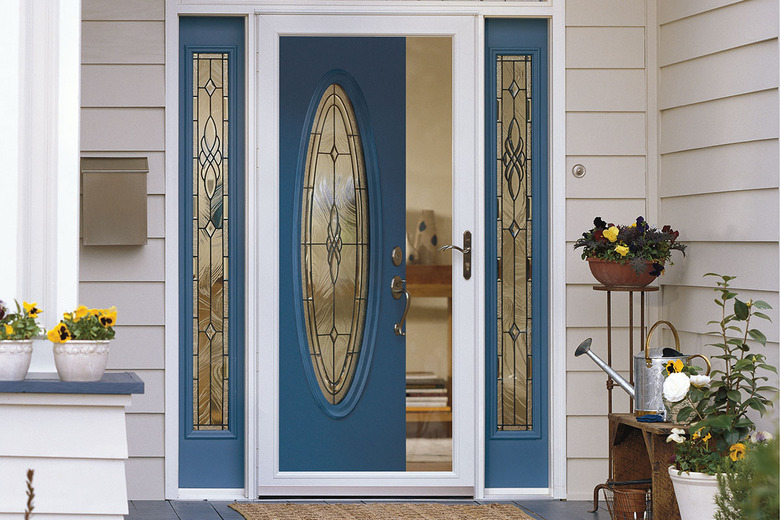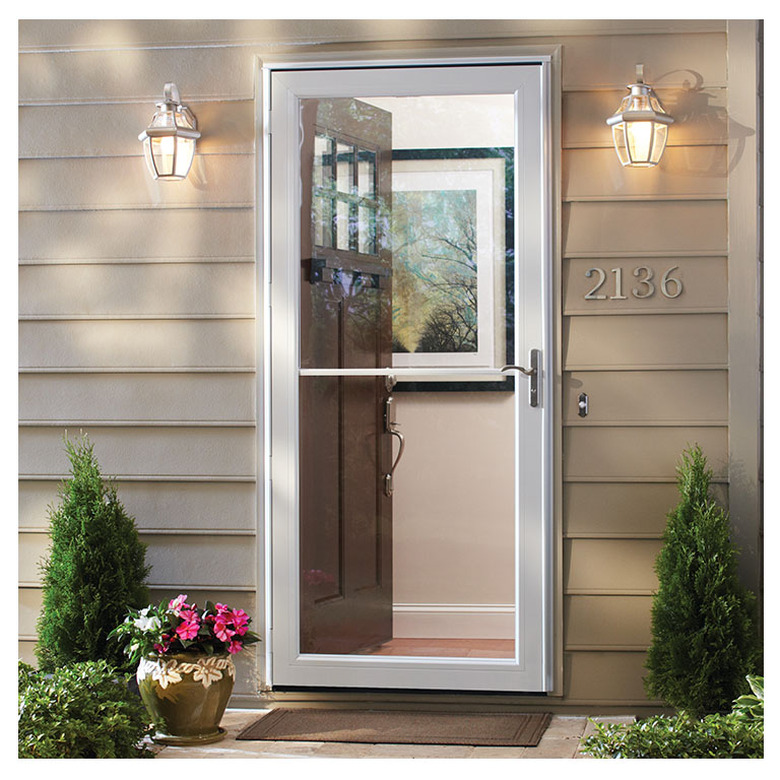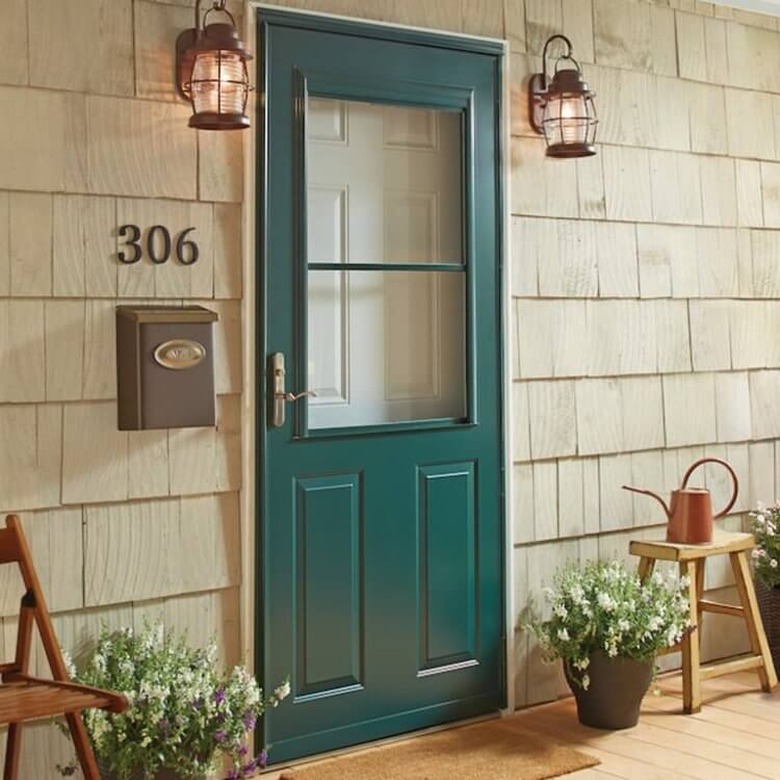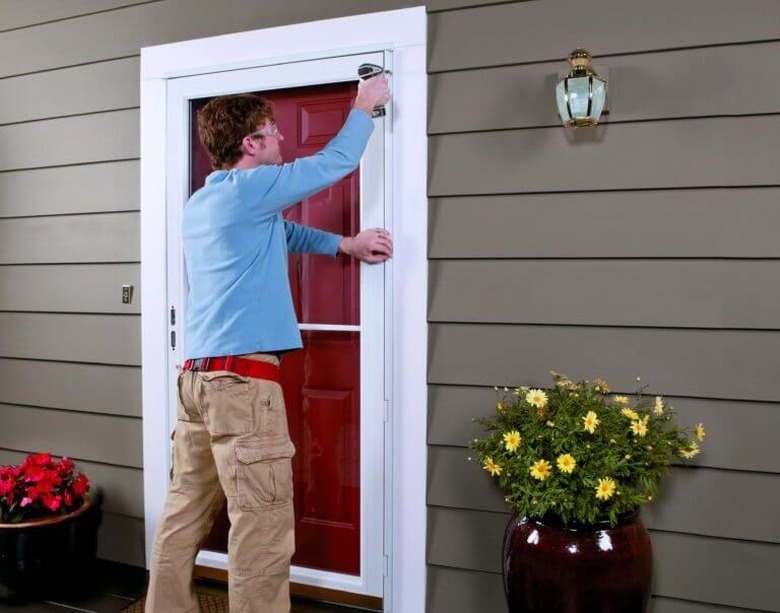A Homeowner's Guide To Storm Doors
Although not a common feature in homes that enjoy moderate climates, a secondary storm door installed in addition to the main entry door is a common feature in climates that have pronounced seasonal climate shifts or dramatic weather. Storm doors accomplish a number of tasks: They can block drafts when the weather is cold; with the main door open, they allow fresh air and natural light into the house while keeping insects out; they protect the main door from the ravages of bad weather; and they sometimes can make a significant design statement.
Most of today's storm doors can accommodate both screens and glass, so there is really no distinction between storm doors and screen doors, although you can still find the traditional screen-only door. You can find storm doors to match any house style, from formal to casual, including doors that come in a range of designer colors with distinctive hardware and etched glass.
Storm Door Styles
Storm Door Styles
Although each door manufacturer uses its own terminology, storm doors fall into two broad categories: full view and partial view.
Full view storm doors. These doors offer the most glass or screen area. The doors are simply a narrow frame that holds the interior glass. They are used primarily on the main entrance to the house so that the prime entry door is in full view. They are also the products where manufacturers offer the most colors—some offer as many as 12—and handle designs and finishes. This gives you the option of coordinating the storm door with the color scheme of the house. Some manufacturers have programs that allow you to customize the door by picking the color, handle style and finish for the handle. Built-in deadbolt locks are part of most doors.
Most full-view doors come with a glass panel and a screen that can be swapped. You insert the one you want according to the season. On some models, low-E (low emissivity) glass is available. This is an invisible film that helps prevent heat loss from inside the house and heat gain from direct sunlight. The Department of Energy recommends that homeowners consider doors with Low-E glass if the door is in direct sunlight for a good part of the day. If it is, heat can build up between the storm door and the main door, possibly damaging the main door. In addition to plain glass, beveled glass and glass etched with designs are also available.
Hideaway screens are another option for some doors. Rather than a screen panel that you install during warm weather, the door features a screen that rolls up into the top of the door. Usually, you can pull the screen about half way down. As you do, a top glass panel slides into a channel on the lower half of the door, much as a storm window works. Manufacturers call these full-view doors, but this is slightly inaccurate since the presence of separate panels means there is a narrow rail across the middle of the door.
Partial view storm doors. This term can mean anything from doors that are half solid and half glass, to others where about 75 percent of the surface area are glass, with a small solid panel at the bottom of the door. Having a bottom panel makes this type a good option for doors that get lots of use from children and pets. Some storm doors feature a built-in pet door.
The color selection for these doors is limited, with white, almond and perhaps a dark color available. These doors usually have a mechanism to accommodate both glass and screen panels. You slide the one you want into place at the top portion of the door while the other is stored in the lower part of the door. Low-e glazing is an option on some door models.
As with full-view doors, some models have contemporary lever handles, but many have a push-button latching mechanism. Hardware finish options are limited.
Storm Door Materials and Installation
Storm Door Materials and Installation
Most storm doors are made from aluminum, making them maintenance free, although you can find vinyl and steel doors as well. Look for doors with reinforced corners as well as weatherstripping on all four sides of the frame.
Storm doors are typically installed by surface-mounting the outer frame to the face of the case molding around the existing door opening. Before buying the door, check the manufacturer's requirements for clearances. Most require about a 1-inch by 1-inch mounting surface. Also, make sure the interior handle of the storm door will not interfere with the handle on the main door.
Doors are available in standard sizes of 30, 32, 34 and 36 inches. Measure the width of your opening in three places. Chances are the measurements will all differ slightly. Because the doors can be adjusted during installation, take the smallest measurement and consult the manufacturer's chart, which will match your measurement to the right door. Hinges can be mounted on either side of the door. Most people place the handle on the same side as that of the main entry door.
In recent years, manufacturers have greatly simplified installation by shipping the doors prehung in their frames with mounting holes pre-drilled. Most are quite easy for DIYers to install. Professional installation usually costs about $175 to $250.
Because they open outward, storm doors are installed with a hydraulic or pneumatic door closer. This device keeps the door from opening too far should it catch a gust of wind and it closes the door automatically. Heavy glass doors may have two door closers—one at the top, the other at the bottom.
Storm doors range in price from about $150 to $500. Full-view doors with hideaway screens and sophisticated hardware occupy the high end of the price list.



